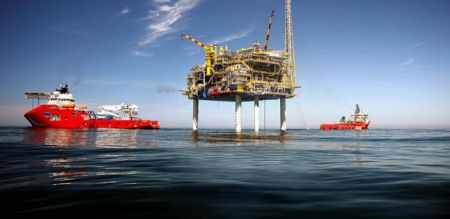KJIPUKTUK (Halifax) - Recent measures that make drilling for oil in Nova Scotia's offshore easier are raising concern among environmentalists.
Shell Canada, after completing an intense and controversial seismic testing exercise last year, will likely start drilling exploratory wells in the Shelburne Basin this summer. BP Exploration (Canada), targeting a large area south of Halifax, isn't far behind.
And that has environmentalists worried about oil spills. It could happen.
A Fisheries and Oceans Canada report warns about the risks of drilling in 1,000 metres of water or more. That's the challenge Shell and BP will be facing in our offshore. Major spills at such depths create unpredictable plumes that can take days to surface, the report states.
“The likelihood of a major blowout is low. But if it happens, you better be prepared to watch oil pollute the Scotia Shelf, and possibly reach our shores, for forty or fifty days on end,” says Mark Butler, Policy Director for the Ecology Action Centre.
Butler points to the 2010 Deepwater Horizon disaster. Eleven workers died, an uncapped well gushed oil into the Gulf of Mexico for three months. BP paid $42.2 billion in criminal and civil settlements.
But while BP (yes the same BP that is now working Nova Scotia's offshore) was found negligent, government regulators shared in the blame. Regulatory oversight was a bit of a joke, a government-appointed panel of investigators that looked into the Gulf of Mexico debacle concluded.
Here in Nova Scotia regulatory oversight of offshore oil and gas exploration is also weak and, if anything, is moving towards increased accommodation of the powerful and wealthy industry, Butler fears.
Federal plans to give more powers to the Canada-Nova Scotia Offshore Petroleum Board (CNSOPB) are a case in point.
The CNSOPB is a joint venture of the federal government and the province. The sole focus of this small agency with forty or so employees is to manage Nova Scotia's offshore oil and gas resources. It regulates, solicits proposals and issues licenses for offshore oil and gas activities. Both rig workers safety and protecting the ocean are within the mandate of the CNSOPB.
Now the feds want to make the CNSOPB a responsible authority under the Environmental Assessment Act, in order to “streamline the regulatory process for offshore oil and gas projects and reduce duplication.”
This will grant additional powers to the CNSOPB, which has a history of accommodating the oil and gas industry and ignoring environmental concerns, Butler says.
The CNSOPB approved the disruptive seismic testing that Shell and BP engaged in even though biologists raised the dangers to marine wildlife that entailed, and even when sensitive areas and endangered species were affected.
Butler doubts that the CNSOPB has the environmental know-how needed to counter balance the combined might of the oil and gas industry, and the provincial and federal politicians who mostly care about jobs and revenues.
The CNSOPB has countered that its approval processes will not change, and that it will continue to solicit input from the public and aboriginal groups.
And earlier it told the Halifax Media Co-op that it may be small, but experience, training and access to a Canadian and international support network of regulators go a long ways in addressing that.
Part of the problem with the CNSOPB is its split mandate. It's difficult to both champion exploration and address environmental concerns within one organization, Butler believes.
That said, Butler puts the latest measures in perspective.
“Environmental assessment has been broken for a very long time,” he says. “The federal government is now doing its 'let's make it easier scheme', but it has been messed up for a long time.”
See also Drilling for oil off the coast of Nova Scotia
Follow Robert Devet on Twitter @DevetRobert



